With its novel concrete prototype destined for sea trials this August, a small Spanish company is joining the European competition in the rapidly emerging market for floating offshore wind turbine platforms. With two large cylindrical concrete floaters mounted on a steelwork sled, Saitec Offshore Technologies' DemoSATH platform is vying with a crop of designs in already various stages of development.
Having managed all aspects of its 2-MW DemoSATH development and delivery, the 35-person company aims to become a turnkey contractor in the floating offshore wind energy sector, says David Carrascosa, director of operations. Its demonstration unit is not yet at its trial site in the Bay of Biscay off the French and Spanish coasts, but the firm is already bidding for a commercial project that could go online in 2027, he adds.
The platform comprises two roughly 120-ft-long prestressed concrete floaters with conical ends and diameters varying around 40 ft. The floaters rest on a roughly 100-ft by 210-ft steelwork frame, which will be fixed with a single-point mooring under 280 ft of water at the Biscay Marine Energy Platform testing center. DemoSATH is one of three main concrete platform variants on the market competing with a number of steelwork options.
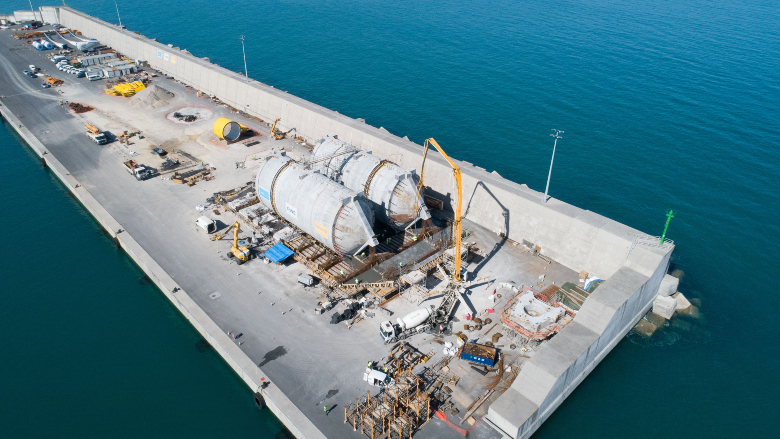 Completed DemoSATH floaters. Photo courtesy of Saitec Offshore
Completed DemoSATH floaters. Photo courtesy of Saitec Offshore
In concrete, DemoSATH competes with the ballasted cylindrical spar concept used in the world's first floating wind farm, in operation since 2017. Developed by Norway's energy company Equinor with Abu Dhabi-based Masdar, the five turbines of Hywind Scotland rise from 300-ft-tall, 50-ft-dia concrete cylindrical spars floating in 300 to 400 ft of water.
From the Scottish project, Equinor led the extension of the spar system with the 11-turbine Hywind Tampen windfarm to supply oil platforms about 90 miles off Norway. The first turbines started generating electricity late last year in what is “Norway’s first and the world’s largest floating wind farm," according to Geir Tungesvik, Equinor executive vice president for projects, drilling and procurement.
Each turbine stands on a floating cylindrical spar, which was slip cast to its full 350-ft height and nearly 65-ft dia by Aker Solutions in a deep fjord at Dommersnes, Norway. Needing such deep water limits the options for spar buoys, says Carrascosa. But the French company BW Ideol has no such constraints.
Ideol's concrete Floatgen design, which started European sea trials in late 2018, is now under consideration for some major developments. Its 2-MW turbine stands on a 31-ft-deep concrete pontoon with 118-ft sides anchored with semi slack ropes. Among potential users is the Floating Energy Allyance, which last year secured development rights for the potential 960-MW Buchan Offshore Wind project, about 47 miles off Scotland's northeast coast.
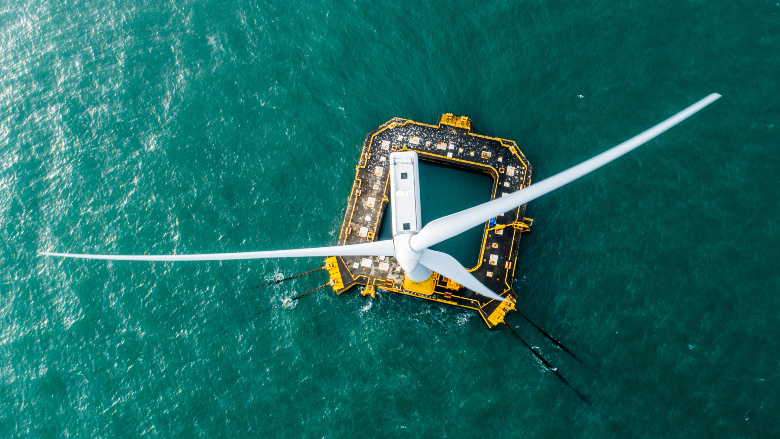 Ideol's Floatgen design started sea trials in 2018. Photo courtesy of Ideal & V. Joncheray - BD
Ideol's Floatgen design started sea trials in 2018. Photo courtesy of Ideal & V. Joncheray - BD
On the steelwork front, floats of the three turbines for the $210-million Provence Grand Large project began hitting Mediterranean Sea waters last month at Fos-sur-Mer, near Marseille, having been fabricated locally by units of Eiffage Group. Owned by EDF Renouvelables and Canada-based Maple Power Ltd., the 8.4-MW turbines are due to be installed some 10.5 miles from the coast by the end of the year.
Designed by Netherlands-based SBM Offshore NV, the 150-ft-tall, 260-ft-wide tripod-shaped structures have two submersible buoys at the ends of each leg, which will be tethered to the seabed. To simplify fabrication and installation of the tensioned leg platform, SBM has since refined the design with its new Float4Wind concept.
Meanwhile, trials are continuing at Norway's Energy Test Center north of Stavanger, on the TetraSpar Demonstrator, developed by Denmark's Stiesdal A/S and claimed in previous ENR coverage to be the world’s first fully industrialized floating offshore foundation. The platform has a pyramid-shaped floater comprising steelwork tubes with lengths up to around 160 ft with some diameters exceeding 13 ft.
"All indications are that our key target, to accelerate the industrialization of floating offshore wind, can actually be met ... at large scale,” said Stiesdal Chairman, Henrik Stiesdal, at the time of the platform's commissioning in late 2021.
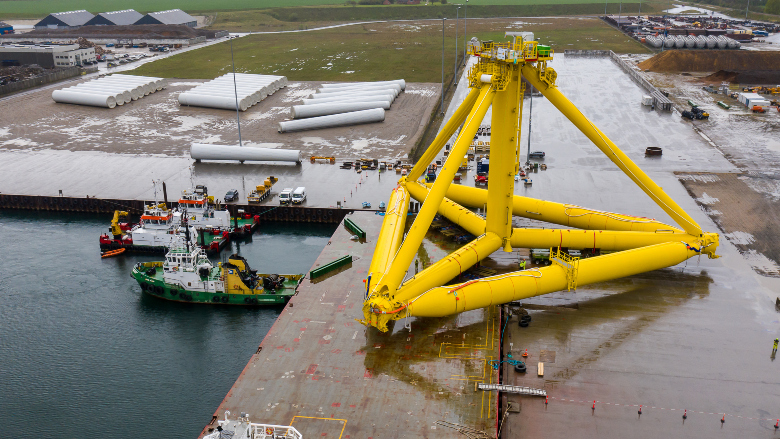 Steel tubes from the TetraSpar demonstrator floater. Photo courtesy of Stiesdal A:S
Steel tubes from the TetraSpar demonstrator floater. Photo courtesy of Stiesdal A:S
But steel remains vulnerable to price fluctuations and requires more specialist skills and equipment than concrete construction, believes Saitec’s Carrascosa. "We are 100% sure that if [our] floater was made of steel [at 2019 prices] we wouldn’t have been able to stake the inflation," he adds. Apart from cost stability, concrete has a lower carbon footprint and benefits local suppliers, he says. Three quarters of DemoSATH contracts were awarded within 15.5 miles.
But with the high levels of projected demand, there is room for many foundation types, says Carrascosa. Also, with each project needing to produce one floater a week, the existing supply chain lacks "the size to handle it with one material."



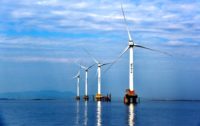
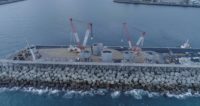
Post a comment to this article
Report Abusive Comment